On June 1, 2023, HHS approved oral fluid testing, blending innovation with empathy. Whether it's overcoming the discomfort of shy bladder syndrome, respecting the identities of transgender and non-binary individuals, or ensuring the integrity of collector-observed testing, oral fluid testing stands as a testament to putting people first.
Insights:
Empowering Leadership: Navigating Employer Choices and Responsibilities
In the realm of ensuring a safe and productive workplace, employers are bestowed with a significant choice: selecting between oral fluid and urine testing to meet their unique needs and the specific circumstances of the testing, be it random, post-accident, or return-to-duty. This decision, a testament to the employer's pivotal role in shaping a trust-based and adaptable testing environment, must be clearly communicated through standing orders to collection sites. It's a reflection of the employer's commitment to not just maintaining control over the testing process, but also to creating a culture that values flexibility, understanding, and the well-being of every individual in the organization.
Oral Fluid Testing is as Reliable as Urine Testing
In the journey towards innovative and trustworthy drug testing methods, oral fluid testing stands out as a beacon of reliability, matching the dependability of traditional urine testing thanks to significant advancements in the field. This evolution is more than just a technical milestone; it represents a pivotal shift in how we uphold the integrity of drug testing programs and, by extension, ensure the safety of our workplaces.
Creating a Culture of Respect: How Oral Fluid Testing Upholds Civil Rights for Non-Binary Individuals
In scenarios demanding directly observed collections, the shift to mandatory oral fluid testing for transgender and non-binary individuals isn't just about compliance—it's a meaningful step towards inclusivity and respect. This approach aligns with civil rights, ensuring dignity and non-discrimination in the testing process. By embracing oral fluid testing, we're not just adhering to guidelines; we're fostering a culture that values empathy and diversity. This move transcends mere procedural adherence, setting a new standard for respecting individual identities and rights and reinforcing our commitment to a more inclusive and respectful society.
Navigating the Intersection of Transparency and Privacy:
In the realm of creating safe and respectful environments, the practice of directly observing oral fluid tests stands as a thoughtful balance between ensuring authenticity and honoring privacy. This method not only mitigates the risk of tampering but also addresses the nuanced privacy concerns that are especially pertinent in sensitive contexts, such as those involving transgender or non-binary individuals. By adopting this approach, we're not just upholding the integrity of the testing process; we're actively fostering a space where dignity is paramount and civil rights are deeply respected. It's a testament to our commitment to inclusivity and the respectful treatment of every individual, reinforcing the principle that trust and empathy are the cornerstones of any truly safe and supportive environment.
Timeline for HHS Approval and Implementation:
In a move that marks a significant evolution in our approach to workplace safety and compliance, the Department of Health and Human Services (HHS) has given its nod to oral fluid testing, setting a new course with the Department of Transportation's (DOT) regulations coming into full effect from June 1, 2023. This pivotal moment, however, comes with a caveat; the utilization of oral fluid testing for DOT-regulated examinations hinges on the certification of laboratories and collection devices—a critical step in ensuring the credibility and reliability of the process.
For organizations keen on integrating oral fluid testing into their safety protocols, this development isn't just a regulatory update; it's an opportunity to lead with foresight and responsibility. Preparing for this shift extends beyond mere procedural updates; it's about reimagining our organizational cultures to prioritize transparency, safety, and adaptability. Updating company policies and investing in comprehensive staff training aren't just administrative tasks; they are manifestations of our commitment to fostering environments that are not only compliant but also deeply aligned with the values of trust and integrity. As we stand on the brink of this change, let's embrace this opportunity to redefine our standards of safety and care in the workplace, ensuring that every member of our community feels valued, protected, and heard.
Call Workplace Safety Screenings on how you can be prepared and revise your policy. We are here for you.

.png?width=500&height=500&name=Blue%20and%20White%20Classic%20Shield%20Financial%20with%20Star%20Logo%20Design%20(1).png)


